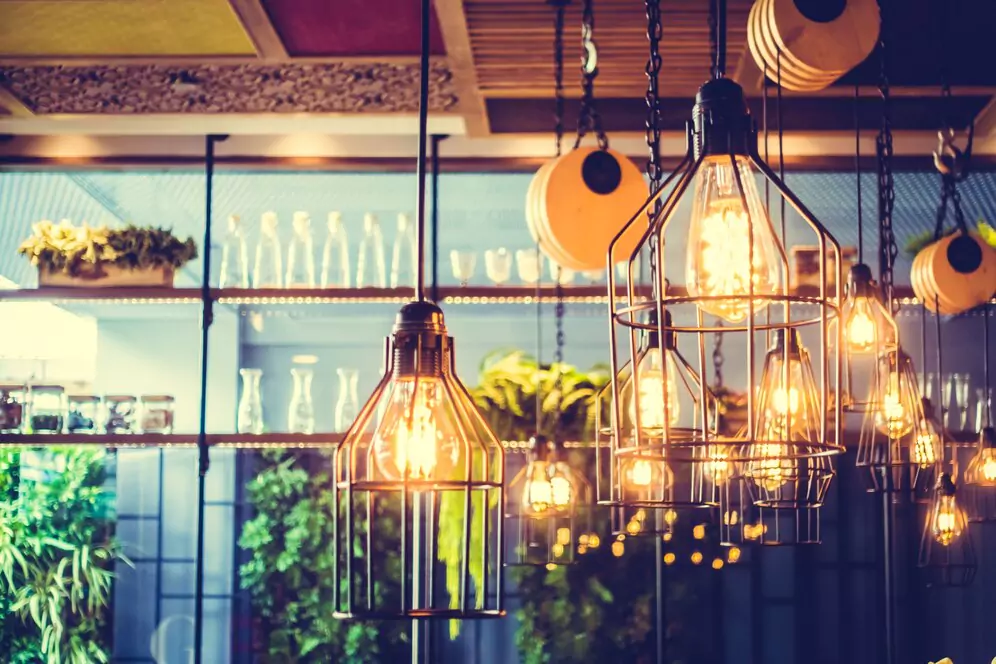The Power of Light
Indoor plants have soared in popularity, offering beauty and tranquility while purifying the air in homes and offices. Yet, the importance of light often goes unnoticed. Light is a cornerstone for plant growth, driving photosynthesis, and influencing overall health. This comprehensive guide delves into the significance of light for indoor plants, the types of indoor plant lights available, factors to consider when selecting plant lights, and essential maintenance tips.

Understanding Light’s Crucial Role for Indoor Plants
Light is paramount for indoor plants as it fuels photosynthesis, the process where plants convert light energy into chemical energy, sustaining growth. Light intensity, duration (photoperiod), and quality (spectrum) collectively shape plant growth. Insufficient light can hinder photosynthesis, leading to stunted growth and weakened health.
Types of Indoor Plant Lights: Pros and Cons
- Incandescent Bulbs: While emitting a warm, pleasing light, they generate excess heat, lack the full spectrum, and have limited energy efficiency.
- Fluorescent Lights: Energy-efficient and providing a good spectrum, they may require additional fixtures and have a shorter lifespan.
- High-Intensity Discharge (HID) Lights: Powerful and efficient, but costly, produce heat, and might need cooling systems.
- Light-Emitting Diode (LED) Grow Lights: Energy-efficient, long-lasting, customizable spectrum, low heat output, cost-effective in the long run.
Factors to Consider When Choosing Plant Lights
- Plant Species and Light Requirements: Research the specific light needs of your plants.
- Size of the Growing Area: Ensure adequate light coverage.
- Budget: Balance quality and cost.
- Energy Efficiency: Choose lights that reduce electricity costs.
- Durability: Opt for lights designed to withstand moisture and humidity.
Determining the Right Light Intensity for Your Plants
Different plants require varying light intensities. Consult plant care guides or experts to determine your plants’ needs and measure light intensity using a light meter.
The Role of Light Spectrum in Plant Growth
Light spectrum, with different colors, impacts plant growth. Blue light encourages vegetative growth, while red light stimulates flowering and fruiting. LED grow lights offer flexibility in customizing the spectrum to meet specific plant needs.
Benefits of LED Grow Lights for Indoor Plants
LED grow lights are increasingly popular due to their energy efficiency, long lifespan, and customizable spectrum. They produce minimal heat and are cost-effective in the long term.
Proper Positioning of Plant Lights for Optimal Growth
Ensure even light distribution by placing lights from various angles. Adjust the light height as plants grow to maintain the optimal distance.
Tips for Maintaining Your Plant Lights
- Regularly clean and dust lights.
- Replace bulbs and damaged parts following manufacturer recommendations.
- Inspect for wear and tear, addressing issues promptly.
- Establish a maintenance schedule.
Common Mistakes to Avoid When Choosing Plant Lights
- Neglecting plant light requirements.
- Choosing the wrong type of light.
- Underestimating the growing area.
- Neglecting maintenance and replacements.
Top Plant Light Recommendations for Different Indoor Spaces
- Small Spaces: Compact fluorescent lights (CFLs) or LED grow lights are suitable for apartments or offices.
- Large Spaces: High-intensity discharge (HID) lights are ideal for greenhouses and commercial gardens.
- Specific Plant Species: Tailor light choices to meet the specific needs of plants like orchids or succulents.
Conclusion
Light is the cornerstone of indoor plant growth and health. Understanding its significance and making informed choices about plant lights can result in a thriving indoor garden. By providing the right light and care, you can enjoy the beauty and vitality that indoor plants bring to your space.
